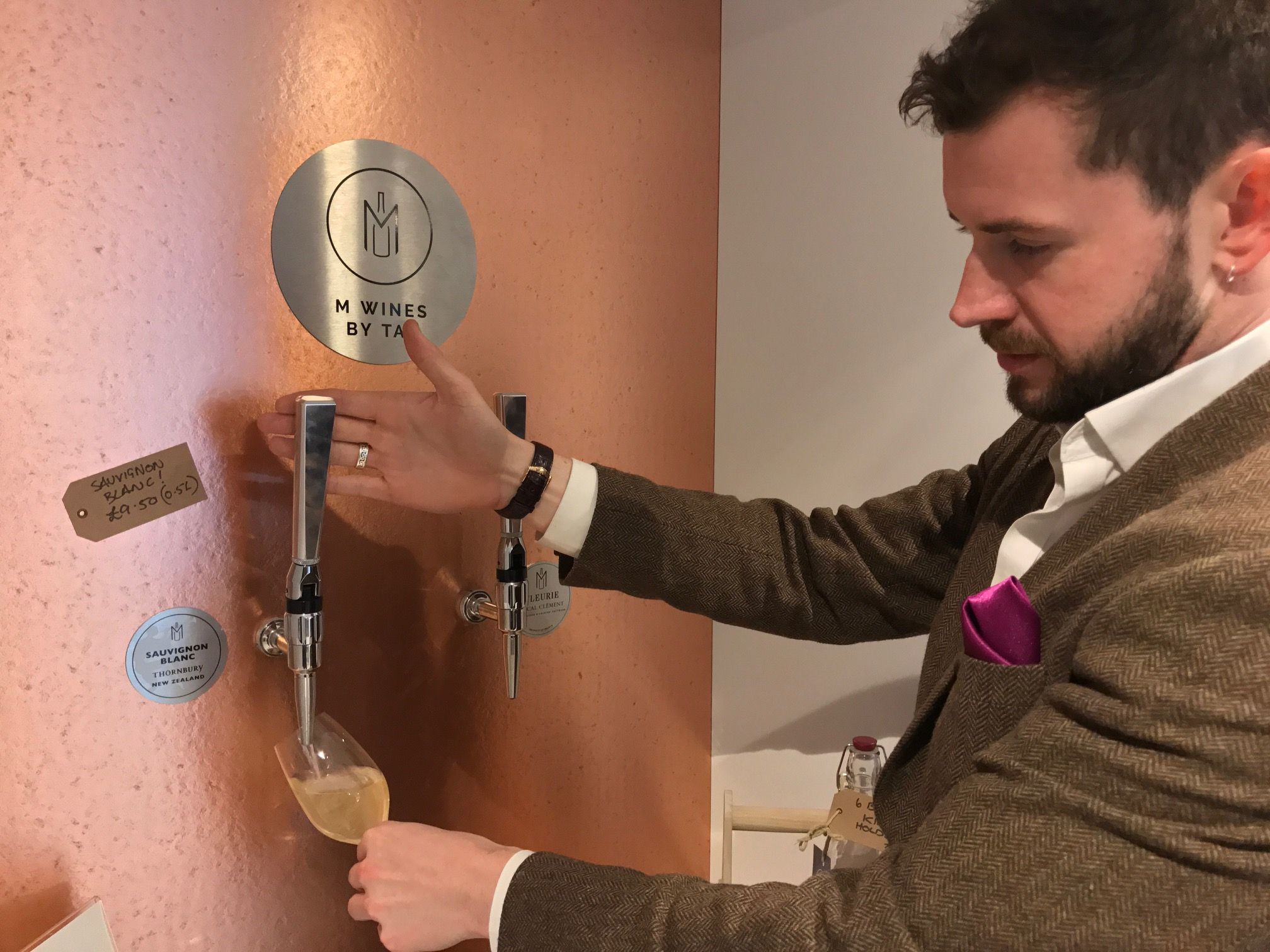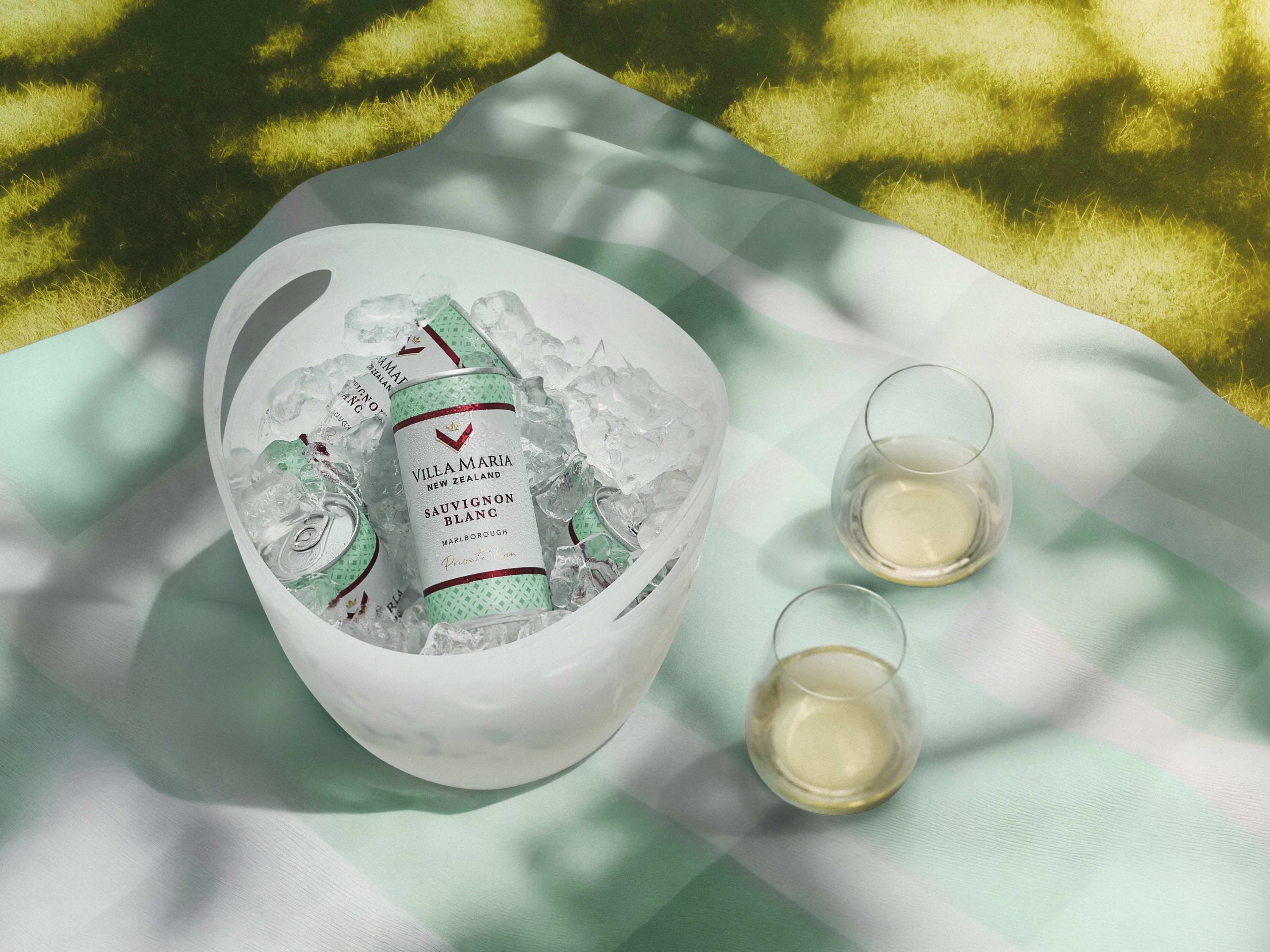Done right then a wine by tap system can provide a dynamic new way to engage both existing and new wine drinkers, says M Restaurant’s Martin Williams and Hatch Mansfield’s Mark Calver.
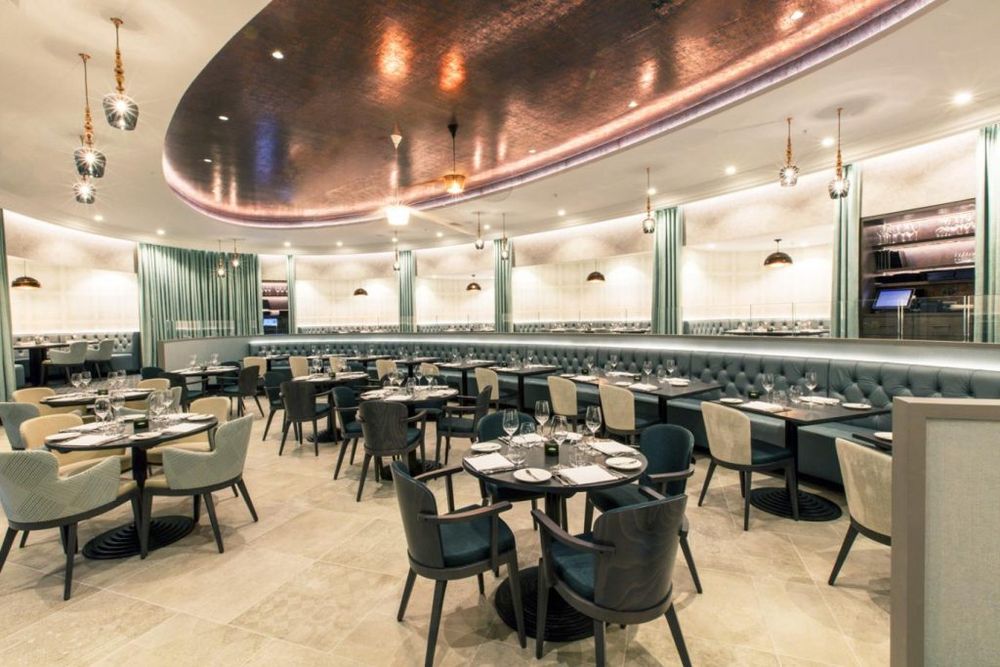
M Victoria now offers wine by tap as part of its 100 plus by the glass offer
OK, admittedly the idea of wine on tap is hardly one for the purists or for white table wannabe Michelin star restaurants. But when it comes to driving wine sales, raising the profile of wine across the premium restaurant and bar sector, doing something good for the environment, and getting the heart beat going of a restaurateur, their accountant and the wine supplier all at the same time then it deserves to be taken seriously.
The more you look, the more you will see wine taps appearing on back bars or tucked away discreetly in restaurant and bar service areas. Not everyone is ready to talk and boast about having them, but for a number of factors wine on tap is making a lot of sense for an increasing number of bar operators and premium restaurant chains.
They tick a lot of boxes, says Martin Williams founder of M Restaurants in London. He has teamed up with wine supplier, Hatch Mansfield, to offer an ambitious wine tap service at his Victoria site.
By his own admission Williams is always open to new ideas that offer a better service to his customers and if they can bring some publicity and make money at the same time then all the better.
But he says he was attracted to the wine on tap system brought to him by Hatch Mansfield primarily because of the environmental and space issues it provides a busy, space tight central London restaurant.
He says the restaurant is able to save the equivalent of using 40 plus glass bottles and 20kg of glass for every keg it uses. Saving both the space needed to house those bottles of wine and the cost incurred in getting rid of the glass. “It makes it a far cheaper proposition to sell wine,” he explains.
Tap will do nicely
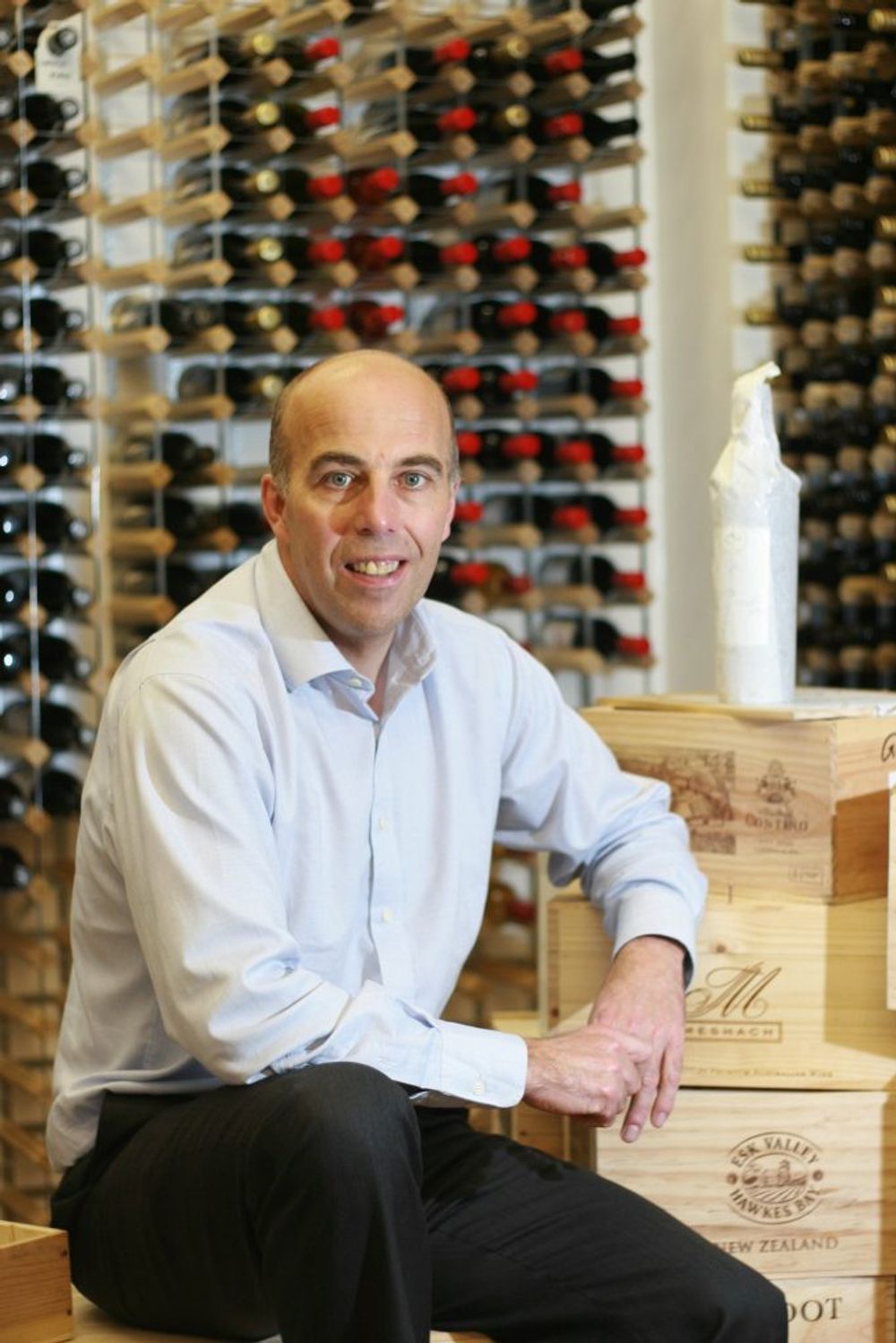
Mark Calver has become a specialist in wine by tap systems
Developing and delivering a good, reliable and quality wine on tap system has become a bit of an obsession for Hatch Mansfield’s commercial director, Mark Calver. He says he has been experimenting and looking at the right wine on tap offer going back to 2008, but had been frustrated at not being able to find the right combination of machinery and quality of wine.
The breakthrough, he says, has come in the quality and consistency of the new 1kg KeyKeg barrels in which wines of tap can be served. Here it is as important, he stresses, to get the chemistry right in how these barrels work as it is the quality of wines in them.
He rekindled his interest in keg-based wine on tap systems two years ago when he came across some kegs at the offices of Hatch Mansfield that had been used in its earlier trials in 2008/2009. He was amazed to find that all these years later that the quality of wine was actually still pretty good.
“We got three Masters of Wine that work at Hatch Mansfield to taste and assess the wine and found that it had actually evolved really well,” he explains.
He has since worked closely with Matthew Clark in helping to develop wine on tap systems. Most recently with a trial with Sir George Fistonich and Villa Maria wines from New Zealand.
Kindred spirits
But he has found a kindred spirit in Martin Williams who told The Buyer that he had separately been looking at ways to use wine on tap to bring some fun and theatre to his restaurants. In particular he wanted to find a petrol pump style wine on tap system which he remembers seeing while on holiday in France as a child.
Ultimately, he says, the success of a wine by tap system comes down to how perfect the serve can be from it. It has to be 100% right to be even considered, stresses Williams. Which means having the consistently right temperature for every glass served. “You have to do a lot of work on temperature profiling to ensure the wine is not served at a certain temperature and then suddenly goes up only minutes later,” he explains.
Williams is now quite confident that a wine tap system driven out of kegs offers a more consistent service than a glass poured out of a bottle.
“You also have to look at the efficiency side of things and what is going to practically work in a bar or restaurant,” adds Calver. “It needs to be simply executed.”
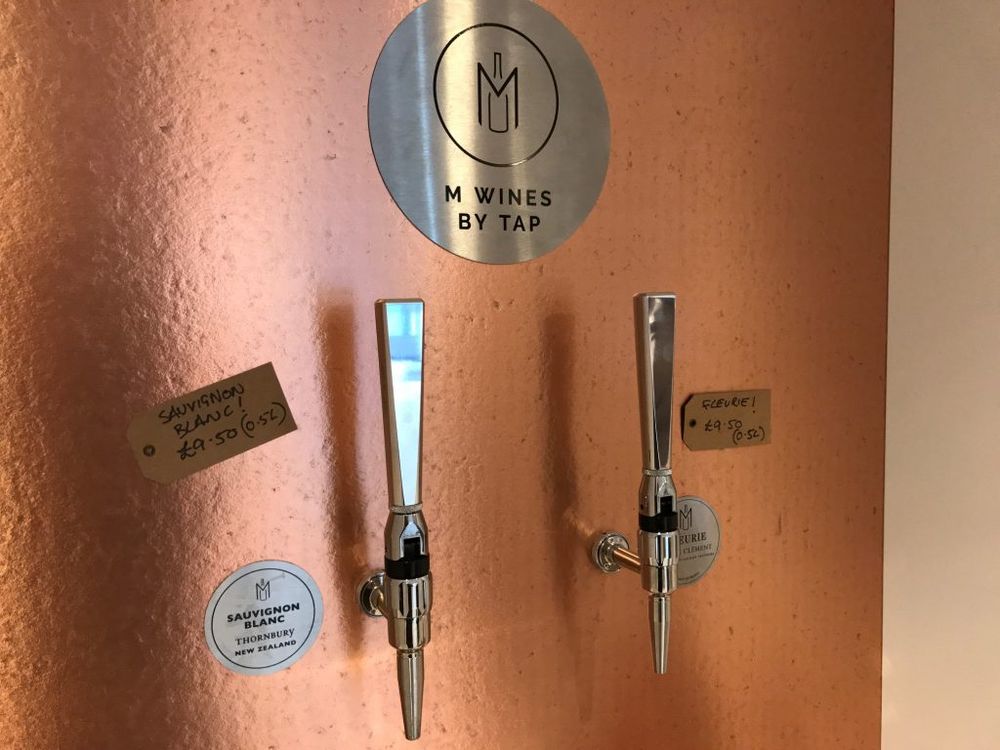
A red or a white? The tap is yours…
Which is why the 40-bottle space saving that can be made using keg-based systems is his preferred option. We can leave the complexity and science involved in the KeyKeg system for another day, but they were initially designed to help in the German micro brewing business and are backed up by reams of university research papers ensuring their quality and safety measures, says Calver.
It essentially works by storing the wine in an aluminium coated bag within a plastic keg that can hold 30 litres of wine. As the wine is wine is poured a gas is emitted which increases the pressure against the bag. At no time does the gas come into contact with the wine, ensuring its quality and consistency.
For Williams he wanted to use a wine by tap system that allowed him to offer premium quality wine at good affordable prices, both for drinking in the restaurant and taking home. “We are not using it for entry point wines,” he says. “We want them to help make premium wines more accessible.”
Hatch Mansfield and M Restaurants have worked together to start off with two wines by tap. A red, a Fleurie from Pascal Clement in France, via Matthew Clark, and a white, a Sauvignon Blanc from New Zealand, from the Thornbury winery which is a side project of Villa Maria’s Sir George Fistonich. Both sit side by side in a specially designed unit the equivalent size of an average bathroom sink. The equivalent of over 80 plus bottles on wine in two small KeyKegs.
Personalised service
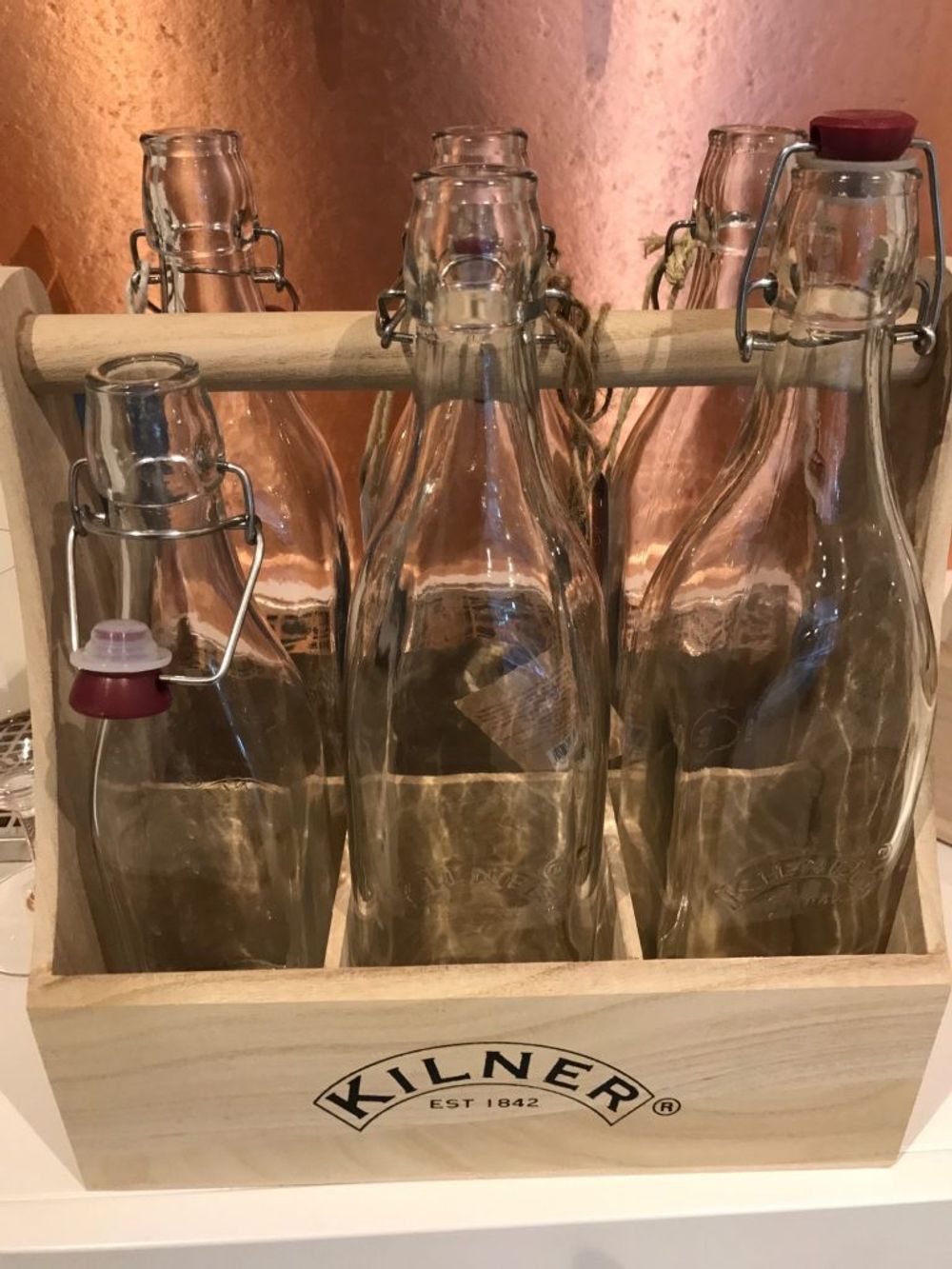
The distinctive Kilner bottles used for M’s wines by the tap
As the M Victoria outlet also includes its own wine shop, the tap offer has developed so that customers can come in and buy the distinctive shaped design of different sized sterilised Kilner jars, fill them up and then take them home with them. By paying for the bottle the hope is that they will then bring them back to be refilled.
Customers can choose from a 50ml bottle (RRP: £9.50), a 1Ltr bottle (RRP: £19) and a 5Ltr bottle (RRP: £95), with a deposit required on the Kilner bottle. To drink the wines in the restaurant costs £19.50 for half a litre and £38 for a litre.
“There are very few ways we can change people’s behaviour, but here we can get them to recycle bottles and keep bringing them back for more wine,” says Williams.“We have the opportunity with the M Wine Store to do something very different and allow people to enjoy their wine in a sustainable, carbon neutral way as possible.”
He has even installed an engraving machine at M Victoria so that customers can personalise their take away bottles or have special messages printed to give to friends or family, at £3 a bottle. It has proved hugely popular, particularly over Christmas where people were having special bottles designed and engraved as presents, says M Wine Store manager, Harry Crowther (main picture).
By extending the tap offer to guests dining in the restaurant has proved a good talking point with other customers when they see the distinctive bottles and jugs on fellow diners’ tables, adds Crowther. It also provides another route in to the wine list for guests, he says.
By the glass offer

Martin Williams is excited by the environmental impact wine by tap can have
Williams says the success of the tap system means it is now introducing a dedicated wines by the glass section to its revamped wine list. It means guests can now choose from wines served from bottle, by automatic dispensing machines, by tap or via the Coravin dispensing device.
“We were probably offering 100 wines by the glass, but not everyone was aware of that so we are going to have a dedicated menu to explain it,” he says. “People are definitely more aware of thew quality of wine you can now have by the glass. But if we end up doing 150 wines by the glass then we have to get our storage right so that we are offering a consistent glass every time.”
Calver is confident similar KeyKeg systems would be ideal right across the on-trade from gastro pubs to casual dining chains. Crucially it allows them to offer more premium wines at more affordable prices. “It also really enhances their wines by the glass proposition,” he adds.
“We know it is a struggle to always bring 18 to 28 year olds in to wine as it does not have the theatre of ordering a cocktail or seeing it being made. This is going some way to address that. Like with premium beers or craft beers on draught.”
Hatch Mansfield is currently with Williams and M about how it can make wines by tap part of the new neighbourhood restaurants that it is looking to open this year, starting in Twickenham in the next few months.
“We are really excited by that and it will provide a new challenge to work in the smaller space. But when you consider you have the choice of 40 bottles or one KeyKeg then it is a very attractive offer,” says Calver.
And in the on-trade, if the sums add up then the demand will follow.
